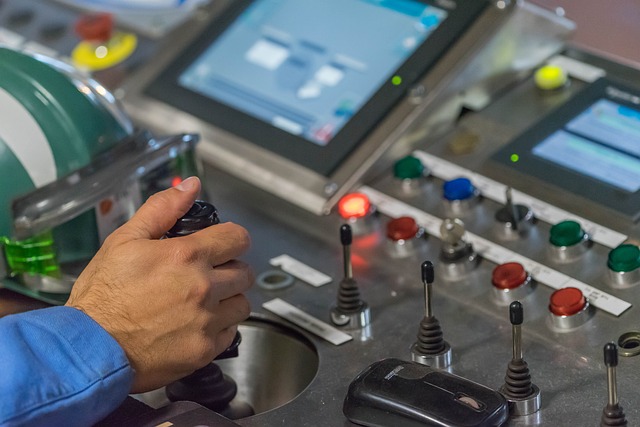The Rise of Trading AI: Revolutionizing the Financial Markets
In the ever-evolving world of finance, one of the most significant advancements has been the emergence of artificial intelligence (AI) in trading. As we delve into the intricacies of trading AI, we will explore its implications, advantages, challenges, and the future outlook for investors and traders alike.

Understanding Trading AI
At its core, trading AI refers to the use of artificial intelligence technologies to automate the process of trading financial instruments. This includes stocks, bonds, commodities, and foreign exchange, among others. AI systems analyze vast amounts of market data in real-time, allowing them to make trading decisions based on predefined algorithms and machine learning models.
How Trading AI Works
The functionality of trading AI can be broken down into several components:
Data Collection: Trading AI systems collect data from various sources, including historical market data, news articles, social media, and economic indicators. This data is critical for understanding market conditions and potential trading opportunities.
Algorithm Development: Based on the collected data, sophisticated algorithms are developed. These algorithms can be rule-based or machine learning models, designed to recognize patterns and predict future price movements.
Execution: Once the AI system identifies a viable trading opportunity, it executes trades automatically, often at lightning speed. This immediate action minimizes the risk of missing out on profitable trades.
Feedback Loop: Post-trade, the AI system evaluates its performance, learning from previous trades to refine its strategies and improve its future decision-making process.
Key Technologies Behind Trading AI
Several technologies contribute to the effectiveness of trading AI:
Machine Learning: Through machine learning, trading AI systems can evolve and adapt to new data, enhancing their predictive power over time.
Natural Language Processing (NLP): NLP enables trading systems to analyze news articles, earnings reports, and social media sentiment to gauge public perception and its potential impact on stock prices.
High-Frequency Trading (HFT): AI-driven HFT strategies leverage algorithms to execute a large number of orders in fractions of a second, capitalizing on market inefficiencies.
Advantages of Trading AI
The integration of AI in trading offers numerous advantages:
Emotion-Free Trading: One of the main benefits of trading AI is its ability to remove human emotion from the trading equation. Human traders often fall victim to fear and greed, leading to impulsive decisions. AI, however, relies solely on data and predetermined strategies.
Improved Efficiency: AI can analyze thousands of data points simultaneously, enabling it to identify trends and opportunities that a human trader might miss.
Consistent Performance: Trading AI can maintain a consistent trading strategy, avoiding the variance in performance that often accompanies human emotions and biases.
Time-Saving: Automated trading processes significantly reduce the time commitment associated with manual trading, allowing traders to focus on strategy development and market research.
Disadvantages and Challenges
While trading AI presents numerous benefits, it is not without challenges:
Market Volatility: The unpredictable nature of financial markets can lead to significant losses, especially if an AI system encounters unforeseen events that it hasn't been programmed to handle.
Overfitting: There's a risk that AI models become too specialized based on historical data, making them ineffective in predicting future market movements.
High Competition: As more traders and institutions adopt AI, the competitive landscape becomes fiercer, potentially erasing the advantages once enjoyed by pioneers in trading AI.
The Future of Trading AI
Looking ahead, the potential for trading AI appears to be boundless. With advancements in technology continuing to emerge, we can expect AI systems to grow increasingly sophisticated:
Enhanced Predictive Analytics: As machine learning algorithms improve, we may see trading AI capable of more accurately predicting market trends and price fluctuations.
Integration with Blockchain Technology: The fusion of trading AI with blockchain could lead to greater transparency and security in trading processes, potentially revolutionizing how trades are executed.
Personalized Trading Strategies: Future trading AI could tailor strategies to individual investors' risk profiles and investment goals, creating a bespoke trading experience.
My Perspective on Trading AI
In my opinion, the rise of trading AI is both exciting and concerning. On one hand, AI undoubtedly offers efficiency and objectivity in trading. As a person who values data-driven decision-making, I appreciate the systematic approach that AI brings to an otherwise volatile environment. However, I also worry about the increasing reliance on automated systems, which could lead to a reduction in human oversight. The potential for catastrophic failures always looms large when algorithms strike unexpected market dynamics.
Conclusion
The emergence of trading AI is reshaping the financial landscape, offering both new opportunities and challenges for traders and investors. While the technology can lead to more efficient and effective trading strategies, it's crucial for market participants to remain vigilant and adaptable to the changing environment. Ultimately, the balance between harnessing the power of AI while maintaining sound financial principles will determine the success of future trading endeavors. As with many technological advancements, those who adapt and learn will undoubtedly emerge as the frontrunners in this new era of trading.
